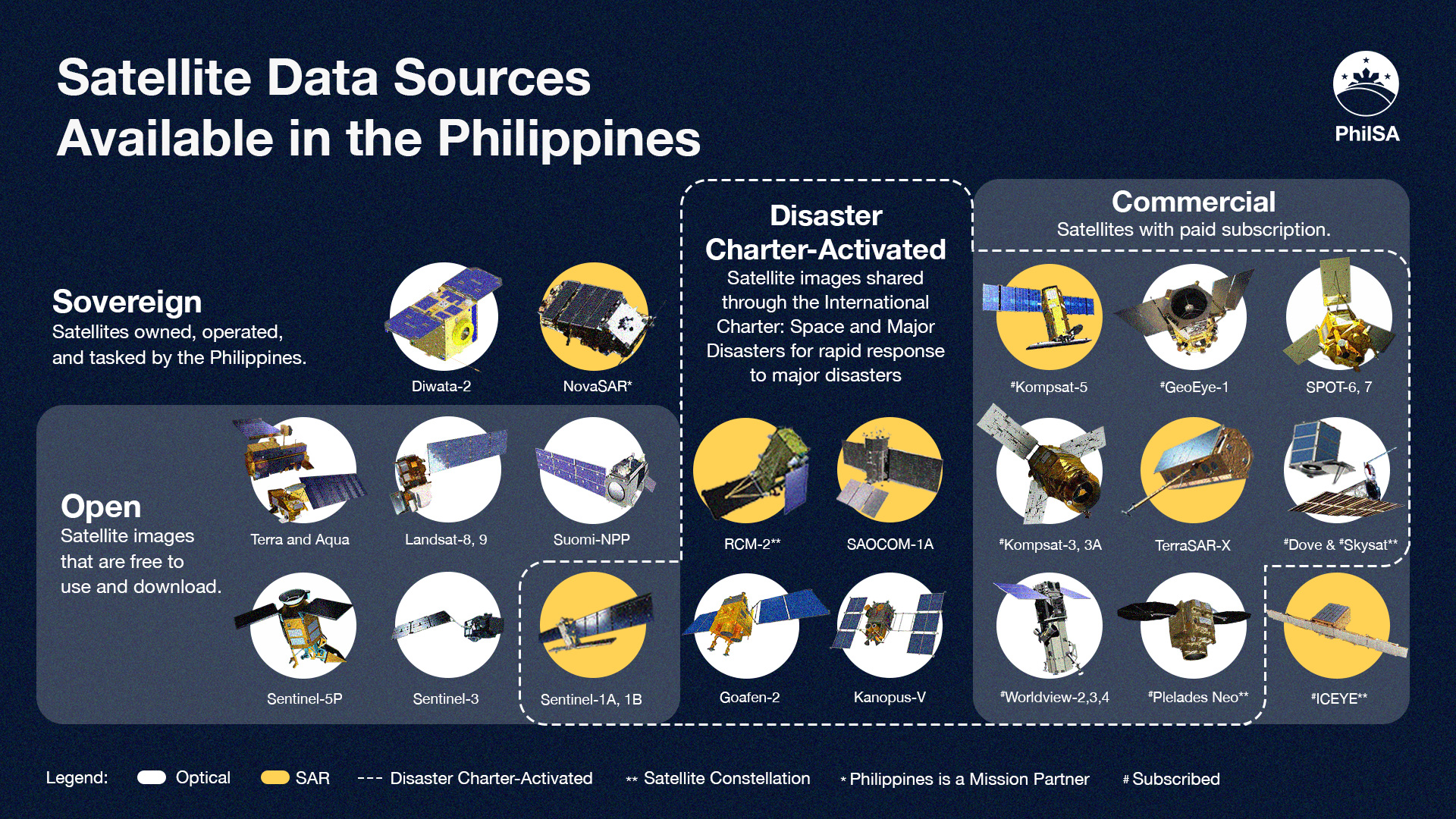Following the release of flood impact and change detection maps for Typhoon Paeng (Nalgae) to the media, the Philippine Space Agency (PhilSA) holds a workshop to familiarize journalists on how to read and interpret these satellite images. From 28 October to 06 November, the Disaster Risk Reduction Management (DRRM) team of PhilSA and the Department of Science and Technology Advanced Science and Technology Institute (DOST-ASTI) released maps that showed the extent of flooding in Pampanga, Capiz Province, Maguindanao, and Cotabato, among other areas. The images have also been provided to the Office of Civil Defense (OCD). These images have been obtained from the country’s satellite subscriptions.

The various satellites that provide the Philippines data for numerous uses including disaster, agriculture, and maritime applications
The workshop held on 09 November at PhilSA office in Eastwood Quezon City covered a discussion on the different types of flood maps being issued to the public, a hands-on demonstration on using these maps, as well as a session on interpreting satellite images taken before and after Typhoon Paeng. Reporters, editors, and writers covering environment, climate, and disaster stories participated in the activity. The briefing and workshop were facilitated by PhilSA Space Information Infrastructure Bureau (SIIB) Director Dr. Ariel C. Blanco and PhilSA Space Data Mobilization and Applications Division (SDMAD) Supervising Science Research Specialist Engr. Roel de la Cruz.
“Space data provide valuable information for disaster responders, policymakers, and vulnerable communities to better adapt, prepare, and come up with more effective and innovative efforts to mitigate the impacts of climate change. Using information from space, especially with the help of the media, we can prevent the loss of lives and livelihoods,” Dr. Blanco said.
Part of PhilSA’s mandate under RA 11363 or the “Philippine Space Act” is improved public access and resource sharing where PhilSA is to assist the government and the private sectors in delivering public service through the use of space assets. PhilSA is also mandated to develop space education and public awareness through education and capacity building.




